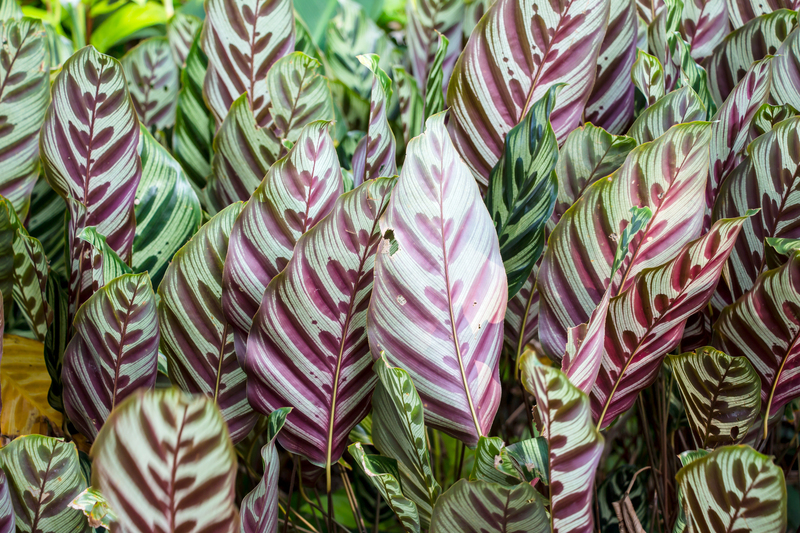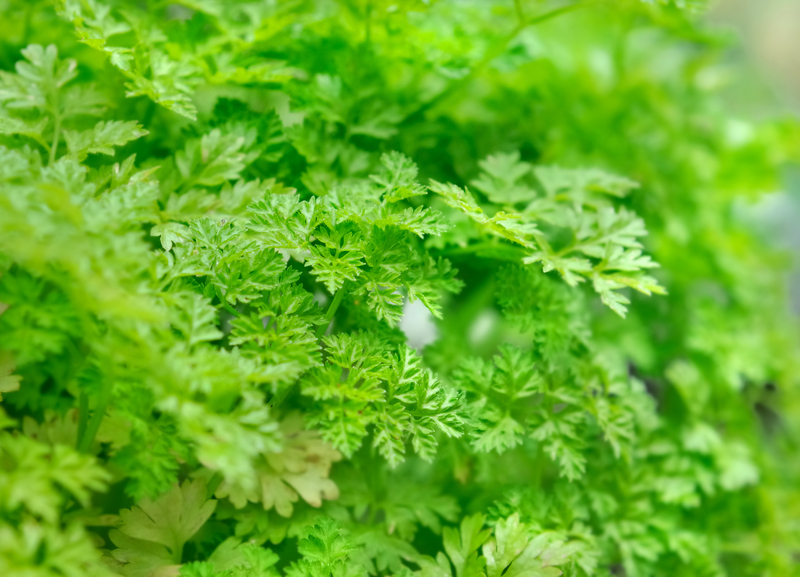Sowing Seeds for Climate Action Through Personal Gardens
Posted on 01/07/2025
Sowing Seeds for Climate Action Through Personal Gardens
In an era where the effects of climate change are becoming increasingly evident, individuals are exploring ways to make a tangible impact. Sowing seeds for climate action through personal gardens is more than just a leisurely hobby; it's a proactive step towards environmental sustainability. If you're curious about how your own green space can aid the planet, read on for a comprehensive, engaging, and informative guide to transforming your garden into a hub of climate resilience.

Why Personal Gardens Matter for the Environment
Personal gardens have the unique power to foster sustainable ecosystems right at our doorsteps. While individual plots may seem modest, when multiplied across neighborhoods and cities, they contribute to meaningful ecological change. Let's explore the specific ways personal gardening for climate action makes a difference:
- Carbon Capture: Healthy soil, maintained with organic matter and plants, can store atmospheric carbon, helping to mitigate climate change.
- Biodiversity Hotspots: Gardens provide habitats for pollinators and wildlife, crucial for ecosystem balance.
- Microclimate Regulation: Green spaces lower urban temperatures and reduce air pollution.
- Reduced Food Miles: Growing food at home cuts down on the energy and emissions associated with transportation.
- Building Community Resilience: Gardeners often share resources, knowledge, and harvest, strengthening local networks.
Understanding the Link: Sowing, Sustainability, and Climate Solutions
When you plant seeds for climate action, you're not just nurturing vegetation--you're supporting broader environmental goals. Every seed sown in your garden is a small act of hope, signaling a commitment to a healthier planet.
How to Make Your Personal Garden Climate-Friendly
Ready to harness your gardening efforts for the planet? Here are actionable steps to ensure your garden becomes a beacon of climate action at home:
1. Choose Climate-Resilient Plants
Opt for native and drought-tolerant species that thrive in your region's specific conditions. These plants are naturally more resilient to climate stressors, require less water, and host local wildlife.
- Research what thrives locally with the help of native plant societies.
- Mix perennials with annuals to create year-round coverage and blooms for pollinators.
2. Adopt Organic and Regenerative Practices
Gardening for climate solutions involves rethinking traditional methods:
- Compost organic waste instead of sending it to landfill, returning nutrients to the soil and reducing methane emissions.
- Practice crop rotation and cover cropping to enrich your soil and prevent erosion.
- Avoid fertilizers and pesticides that harm soil microbes and runoff into waterways.
3. Optimize Water Use
Water scarcity is an increasing climate challenge. You can:
- Install rain barrels or water butts to capture and reuse rainwater.
- Mulch liberally to retain moisture and reduce evaporation.
- Group plants with similar water needs together for efficient irrigation.
4. Support Urban Biodiversity
A climate-conscious garden is also a sanctuary for wildlife. Here's how to enhance urban biodiversity:
- Add pollinator-friendly flowers to attract bees, butterflies, and birds.
- Incorporate features like log piles, birdbaths, or bee hotels to create shelter.
- Reduce lawn area in favor of diverse plantings.
5. Grow Your Own Food Sustainably
Every tomato or herb you harvest helps reduce the carbon footprint associated with industrial agriculture. For climate-friendly food gardening:
- Prioritize heirloom and open-pollinated seeds to sustain agricultural biodiversity.
- Plant in succession to maximize your yields throughout the season.
- Interplant species (like carrots with onions) to naturally deter pests.
Innovative Gardening Techniques That Foster Climate Action
Modern gardeners are embracing innovative climate action gardening methods tailored to both urban and rural spaces. Consider integrating some of these advanced practices:
Permaculture Design Principles
Permaculture is an approach that mimics natural ecosystems. It encourages closed-loop systems, waste recycling, water conservation, and perennial polycultures. By designing your garden with multiple layers (trees, shrubs, ground cover, root crops, vines), you boost productivity and resilience.
No-Till Gardening
Disturbing soil less preserves carbon, retains moisture, and protects the web of life below ground. Simply add compost and plant directly--your garden will thrive while sequestering more carbon.
Vertical and Container Gardening
Ideal for small spaces, these methods increase plant density, cool urban microclimates, and minimize land use. Use recycled materials for containers to further cut environmental impact.
Edible Forest Gardening
Create a self-sustaining mini forest composed of fruit trees, berry bushes, herbs, and ground cover. This approach maximizes carbon capture and food production while offering habitat for local fauna.
Community Gardens: Scaling Up Local Climate Impact
While individual gardens matter, community gardening for climate action magnifies the benefits. Shared garden plots can:
- Engage a wider population in sustainable practices.
- Transform vacant lots into lush, carbon-sequestering spaces.
- Encourage knowledge sharing and resilience in the face of environmental changes.
Participating in or starting a community garden is a rewarding way to connect, cultivate food security, and foster environmental stewardship on a collective scale.
The Science: How Personal Gardens Fight Climate Change
Personal gardens and climate change mitigation are linked through well-established scientific principles:
- Carbon Sequestration: Trees, shrubs, and soil organic matter have the capacity to absorb and store carbon dioxide, a key greenhouse gas.
- Heat Island Mitigation: Green spaces can lower temperatures in urban environments by providing shade and releasing water vapor.
- Flood Prevention: Plants and healthy soils absorb rainwater, reducing runoff and the risk of floods.
- Air Quality Improvement: Dense plantings filter pollutants and dust from the air, benefitting both the planet and human health.
Research Highlights
- A 2017 study in "Landscape and Urban Planning" found that urban gardens could store up to 15 kg of carbon per square meter annually.
- Native plant gardens support up to 3x more pollinators than traditional exotic lawns.
- Rain gardens can absorb up to 30% more water than turfgrass, aiding urban flood prevention.
Overcoming Common Barriers to Climate Action Gardening
While there are clear benefits to sowing seeds for climate resilience in personal gardens, some challenges persist. Here's how to address them:
Space Limitations
- Utilize rooftops, balconies, and unused corners for vertical or potted gardens.
- Community garden plots offer access for those lacking private yards.
Lack of Experience
- Many gardening for climate action resources and workshops are available both online and locally.
- Start small: a container of herbs, a patch of wildflowers, or a single raised bed can yield impressive climate benefits.
Time Constraints
- Choose low-maintenance native plants and install drip irrigation.
- Spend just an hour a week to keep a basic climate action garden flourishing.
The Social Ripple Effects of Climate Action Gardening
Adopting eco-friendly gardening for climate action goes beyond environmental gains; it also brings communities closer together.
- Educational Opportunities: Teaching kids and neighbors about sustainable practices sows the seeds for future generations.
- Community Building: Sharing seeds, compost, and harvests fosters trust and cooperation within neighborhoods.
- Empowerment: Witnessing positive changes in your local environment inspires further action and advocacy for broader climate solutions.
*Ask around your neighborhood. You might just find a garden buddy eager to exchange tips, seeds, and climate action victories!*
Tips for Beginners: Getting Started with Climate Hero Gardening
If you're feeling inspired but unsure where to begin, these steps will set you on the right path:
- Observe your microclimate--sun patterns, rainfall, and soil type--before planting.
- Plan for diversity--mix trees, shrubs, flowers, and vegetables for a resilient garden ecosystem.
- Start composting kitchen and yard waste to feed your soil and reduce landfill contributions.
- Connect with local gardeners--exchange seeds, stories, and advice.
- Track your impact--notice pollinator visits, water savings, and the amount of food you grow at home.

Resources to Deepen Your Climate Action Gardening Journey
- Xerces Society - Pollinator-friendly gardening guides and regional plant lists.
- Regeneration International - Resources on regenerative agriculture and gardening techniques.
- Local cooperative extensions - Workshops, seed swaps, and seasonal planting calendars suited to your area.
- Social media groups focused on eco-friendly, climate-smart gardening in your region.
Conclusion: Planting Hope for the Planet, One Garden at a Time
Sowing seeds for climate action through personal gardens offers a practical, fulfilling, and impactful way to engage with the greatest challenge of our era. By adopting climate-resilient practices, fostering biodiversity, and sharing knowledge, every gardener becomes an agent of positive change. Remember, even the tiniest plot or even a windowsill can make a significant difference.
Your garden is more than a patch of earth--it's a living laboratory for climate solutions, community building, and hope. Start today, nurture tomorrow, and watch your seeds of change grow.

